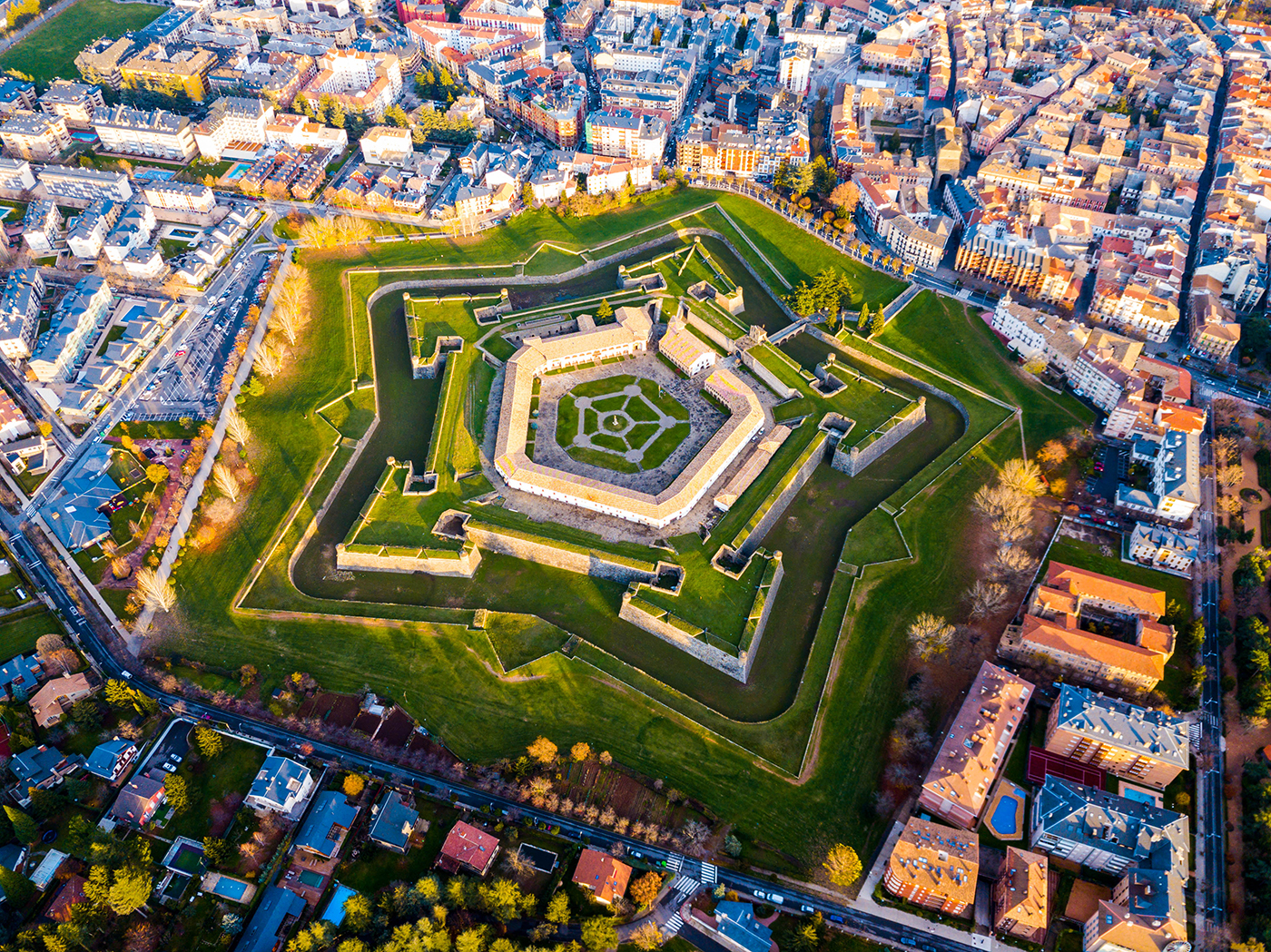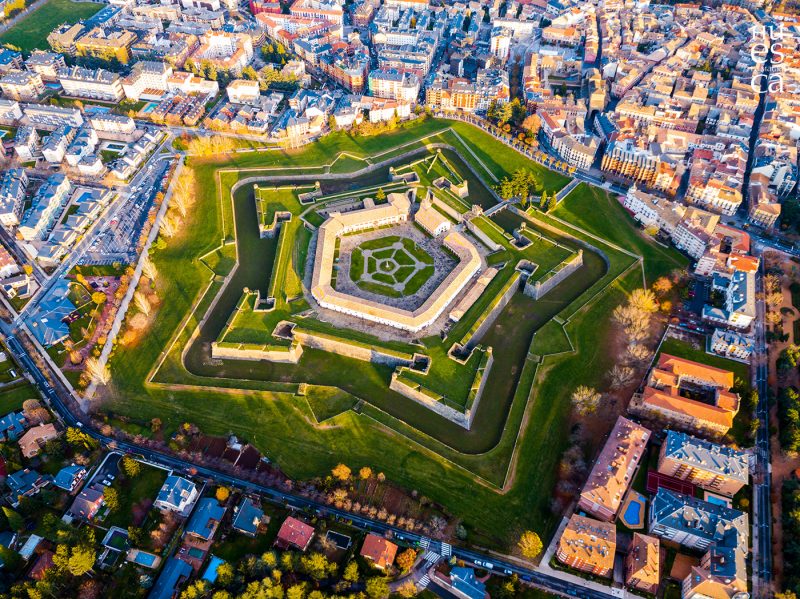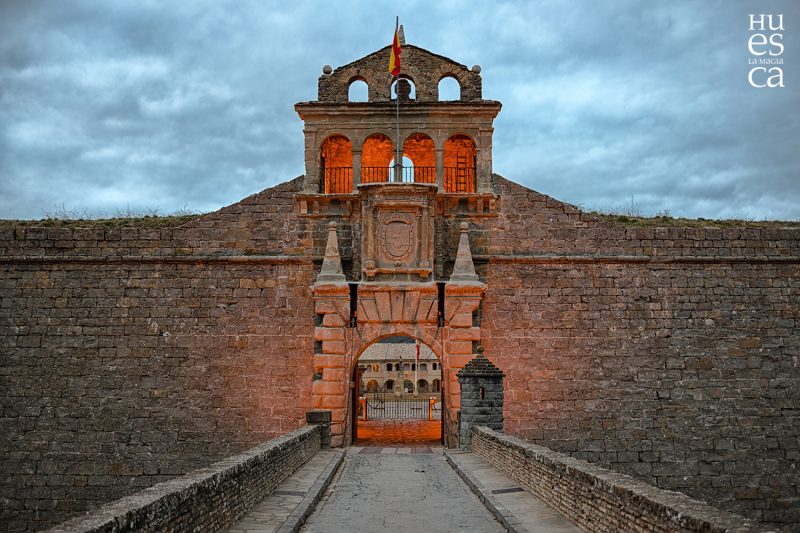|
|
General: JAMES WEBB TELESCOPE (OTHER NEXUS ROME)
Escolher outro painel de mensagens |
 Primeira
Primeira
 Anterior
2 a 13 de 13
Seguinte
Anterior
2 a 13 de 13
Seguinte
 Última
Última

|
|
|

Pues sí, en la provincia de Huesca tenemos nuestro propio Péntagono, pero a diferencia del de EE.UU aquí no se localiza el departamento de Defensa de España (aunque antaño tuvo una función similar) en cambio es todo un espacio dedicado a la historia de este impresionante monumento y ocio para toda la familia con actividades muy muy divertidas.
 El Castillo de San Pedro de Jaca, popularmente conocido como Ciudadela de Jaca, es una fortaleza militar construida en el siglo XVI que tiene la consideración de Bien de Interés Cultural, al amparo de lo dispuesto en la Ley 16/1985, de 25 de junio, de Patrimonio Histórico, y Decreto de 22 de abril de 1949. El Castillo de San Pedro de Jaca, popularmente conocido como Ciudadela de Jaca, es una fortaleza militar construida en el siglo XVI que tiene la consideración de Bien de Interés Cultural, al amparo de lo dispuesto en la Ley 16/1985, de 25 de junio, de Patrimonio Histórico, y Decreto de 22 de abril de 1949.
Esta fortificación, de planta pentagonal, fue construida a finales del siglo XVI (las obras se inician en 1592). Conserva todas y cada una de sus partes características: foso, baluartes, escarpas, cuarteles, polvorines, túneles… además de una hermosa entrada a la que se accede mediante un puente levadizo.
 ¿Cómo visitar la Ciudadela? ¿Cómo visitar la Ciudadela?
Visita guiada a la Ciudadela de Jaca
Visita con guía los rincones más emblemáticos de la fortaleza de la Ciudadela de Jaca con un recorrido de unos 45 minutos de duración.
TARIFAS
General: 6 €
Reducida: 5 €
Más info >
Visita a tu aire la Ciudadela de Jaca
Visita sin guía a la Ciudadela de Jaca, las Salas de Tropas de Montaña, la sala Premios Ejército, la sala de la batalla de Waterloo y las exposiciones temporales.
TARIFAS
General: 5 €
Reducida: 4 €
Más info >
PACK DE ENTRADA (Ciudadela + Museo)
Visita la Ciudadela (con o sin guía) y el Museo de Miniaturas Militares, Salas de Tropas de Montaña y exposiciones temporales.
TARIFAS
General: 8 € sin guía / 9 € con guía
Reducida: 5 € sin guía / 6 € con guía
Más info >
Pequevisitas
Vive una aventura histórica con Pequevisitas. Visita la Ciudadela y el Museo de Miniaturas de una manera didáctica, divertida y autoguiada, a través de dos retos.
TARIFAS
General: 3€ (no incluye entrada)
Promoción con ‘Pack de Entrada‘: 2€
Más info >
La Memoria de la Piedra
Visita teatralizada a la Ciudadela de Jaca. Un espectáculo que nos remonta a finales del siglo XVI, cuando Felipe II ordenó la construcción de esta fortaleza.
TARIFAS
General: 12 €
Reducida: 10 €
Más info >
El Legado
Visita teatralizada al Museo de Miniaturas Militares de la Ciudadela de Jaca. Un apasionante viaje a través de 32.000 figuritas, desde las civilizaciones antiguas hasta la actualidad.
Actividad disponible para grupos y bajo demanda.
Más info >
Ecociudadela
Programa de educación ambiental con los ciervos de la Ciudadela, donde podrás disfrutar de la visita a ciervos de impronta humana, visita a la manada de los ciervos del foso y el visionado de un vídeo explicativo.
TARIFAS
6€. Niños a partir de un año
Más info >
Exposición clicks
Exposición temporal de muñecos de playmobil a cargo de AESCLICK, con 8 escenarios representados y más de 8.000 piezas.
Del 5 de noviembre al 16 de febrero.
La entrada incluye la visita a la exposición y al belén monumental.
TARIFAS
General: 3€
Reducida: 2€ (menores de 16 años)
https://www.huescalamagia.es/blog/el-pentagono-oscense-la-ciudadela-de-jaca/# |
|
|
|
|
ISLA SAN GIORGIO (VENECIA)=GEORGE LEMAITRE
GEMATRIA EN INGLES DE SEED=33
GEMATRIA EN INGLES DE GATE=33
SARA (CE-SAREA DE FILIPO)=PARALELO 33
|
|
|
|
|

The James Webb telescope: part alien life detector, part time machine
In the lead-up to the launch of the James Webb telescope, we look at the scientific objectives of the most powerful space observatory ever sent into orbit.
Are we alone in the universe? What did the first galaxies formed after the Big Bang look like? How did the planets in our solar system emerge? The James Webb telescope hopes to find answers to these existential questions.
Set to launch on December 22, the James Webb is the product of the combined scientific prowess of NASA, the European Space Agency (ESA) and the Canadian Space Agency (CSA) – and by extension, Université de Montréal (UdeM). The CSA contributed a scientific instrument and a guidance sensor to the massive observatory and René Doyon, Director of UdeM’s Institute for Research on Exoplanets (iREx) and a professor in the Physics Department, is the principal investigator on the Canadian scientific team.
Together, the components supplied by the CSA, NASA and the ESA form the most complex, accurate and powerful space observatory ever built, one that promises revolutionary discoveries in astronomy.
The unparalleled power of the observatory will help scientists throughout the world scrutinize the distant reaches of the universe to learn more about the composition and inhabitability of exoplanets and study the life cycle of stars.
Exploring new worlds in search of life
The James Webb Telescope is the successor to the Hubble space telescope but is more precise and efficient because of the size of its mirror, the range of light it can detect and its location.
These attributes will enable the Webb to study the planets in our solar system and other planetary systems in unprecedented detail. Moreover, the scientific instrument developed by Doyon’s team is designed to analyze many types of celestial bodies, including the atmospheric composition of distant exoplanets.
“What we’re looking for, our holy grail, are ‘biosignatures,’ that is, signs of extraterrestrial life,” explained iREx coordinator Nathalie Ouellette, an astrophysicist who does communications for the James Webb.
She hastened to add that we shouldn’t imagine these signs of life the way they are depicted in science fiction films: “We’re talking about finding signs of biological activity or the signature of certain molecules that we have identified as essential to life, such as oxygen, water vapour, carbon dioxide, methane and ozone. Based on the presence of such molecules, particularly in certain combinations, we may be able to determine that conditions are conducive to the development of life when we explore an exoplanet using the telescope.”
Casting light on the dawn of the universe
Telescopes are also time machines of a sort. “Looking into space is like looking into the past,” said Ouellette. “Light waves travel so fast that, to the naked eye, they seem to flash instantly from one point to another. In space, however, the distances are so vast that the time it takes light to travel is perceptible.”
That makes the Webb a marvellous time machine. It will be able to see back in time to 200 million years after the Big Bang, something that has never been done before. “With the Hubble, we could go to 500 million years after the Big Bang, so now we’re going 300 million years further,” noted Ouellette. “That’s remarkable, considering that the beginning of the universe was a tumultuous period. Galaxies were colliding and stars were forming at a rapid pace.”
“Tell me where you come from and I’ll tell you who you are”
The Webb will thus improve our understanding of the development of the first luminous objects (galaxies) over time. Ouellette believes the telescope will also provide insight into the creation of our own solar system.
“We still have many questions about the origins of life in our solar system. We don’t know exactly how we came to be on Earth and how the planets were formed,” Ouellette pointed out. “By studying other systems, stars and planets at various stages of development, we hope to be able to trace our own history and understand ourselves better.”
That is the ultimate goal of the James Webb: to revolutionize our understanding of the universe and, above all, to place the Earth, in all its fragility and uniqueness, in a broader context.
https://nouvelles.umontreal.ca/en/article/2021/12/09/the-james-webb-telescope-part-alien-life-detector-part-time-machine/
|
|
|
|
|
|
|
| , MA History, BA History

Jesus Christ had twelve disciples, each of whom accompanied the Biblical savior during His time on earth. Many of them continued His Christian work after the ascension. The twelve men were Peter, James (Jesus’ brother), John, Andrew, Philip, Judas Iscariot (who betrayed Jesus, and was replaced by Matthias), Matthew, Thomas, James, the son of Alpheus, Bartholomew, Judas Thaddeus; and Simon the Zealot. Of them all, Saint James, also known as James, brother of Jesus, James, son of Alpheus, James the Lesser, James the Minor, and James the Just, was one of the most prominent and significant.
James, Son of Alphaeus, James the Greater, and James, the Brother of Jesus
 St James the Minor, Peter Paul Rubens, 1613. Source: Wikipedia St James the Minor, Peter Paul Rubens, 1613. Source: Wikipedia
Various Gospels are often ambiguous, at times, as to which James is being referenced. Two to three James’s are spoken of in the Gospels – James, brother of John (aka James the Greater); James, brother of Jesus, and James, son of Alphaeus. The Catholic doctrine of the perpetual virginity of Mary holds that James the son of Alpheus and James, brother of Jesus are the same person, as James could not be Jesus’ physical full brother. In Protestant readings, the two are separate. If the two are separate, then very little is known regarding James, son of Alpheus.
James, Brother of Jesus
 Statue of St. James the Less in the Archbasilica of St. John Lateran by Angelo de Rossi. Source: Wikipedia Statue of St. James the Less in the Archbasilica of St. John Lateran by Angelo de Rossi. Source: Wikipedia
James, the brother of Jesus, was a follower and Disciple of Jesus Christ during His earthly ministry and one of the first leaders of the early Christian Church. He remained in Jerusalem as leader of the church following the death, burial, resurrection, and ascension of Jesus, and was likely martyred at the temple in Jerusalem.
James’ Position in the Early Church
 St. James the Minor, by Georges de la Tour, 1615-20. Source: Wikipedia St. James the Minor, by Georges de la Tour, 1615-20. Source: Wikipedia
Get the latest articles delivered to your inbox
Sign up to our Free Weekly Newsletter
In Acts 15, a Council in Jerusalem was held regarding circumcision over which James presided. The Acts 15 Council is considered probably the first Christian council, where many Apostles congregated to discuss the matter brought by Paul and Barnabas. In Galatians 1, the Apostle Paul records a meeting with James in the process of Paul confirming his conversion to the other Apostles. James may have been the first elected leader within the early church. Through the writings of Eusebius in the 200s, we have the records of Clement of Alexandria from the second century that James was elected leader of the Jerusalem Church.
St James Was Martyred
 Saint James the Less (Menologion of Basil II). Source: The Byzantine Life Saint James the Less (Menologion of Basil II). Source: The Byzantine Life
The death of James the Just around 62 CE is recorded by Eusebius, Clement of Alexandria, and Josephus. Eusebius copied the chronicles of an earlier Christian, Hegesippus, who wrote that James was martyred by being thrown from the pinnacle of the temple in Jerusalem, and beaten with a club when the fall did not kill him.
Non-canonical Writings Attributed to Saint James
 The Protoevangelium of James, James Orr. Source: Rakuten Kobo The Protoevangelium of James, James Orr. Source: Rakuten Kobo
The Gospel of James, also known as The Protoevangelium of James, is a book of unknown source that was being circulated within the second century church. Both Origen and Clement of Alexandria reference the book in their writings, so it was at least written around that time. The Gospel of James contains the first mention of the idea of the perpetual virginity of Mary, the mother of Jesus. The book was condemned by Pope Innocent I in 405, and it has generally not been accepted throughout church history as canonical due to its late writing and inconstant content.
The First and Second Apocalypse of James and the Apocryphon of James are other 2nd century books whose author claimed to be James. Each of these books were from a collection of gnostic (secret knowledge) texts found in Egypt in 1945. In addition to an authorship too late to be James, they are also part of gnostic texts written in an attempt to legitimize the early movement within Christianity.
James, the Son of Alphaeus
 Two Martyr Saints in an Initial S (Alphaeus and Zacchaeus), 14th century. Source: Victoria and Albert Museum Two Martyr Saints in an Initial S (Alphaeus and Zacchaeus), 14th century. Source: Victoria and Albert Museum
James the son of Alphaeus, while mentioned in the listings of the apostles, has very few details known regarding his life. Outside of being listed among the apostles, and described in the Gospel of Mark as “the lesser” or “the smaller,” he is barely mentioned in the Bible. Several early Christian writings attempt to identify him with James the Just, but most try to maintain the perpetual virginity of Mary in a complex manner. It is speculated that he died as a martyr by crucifixion in Ostrakine, Egypt.
https://www.thecollector.com/who-was-saint-james-brother-of-jesus/ |
|
|
|
|
|
 Primeira
Primeira
 Anterior
2 a 13 de 13
Seguinte
Anterior
2 a 13 de 13
Seguinte
 Última
Última

|
|
| |
|
|
©2025 - Gabitos - Todos os direitos reservados | |
|
|

